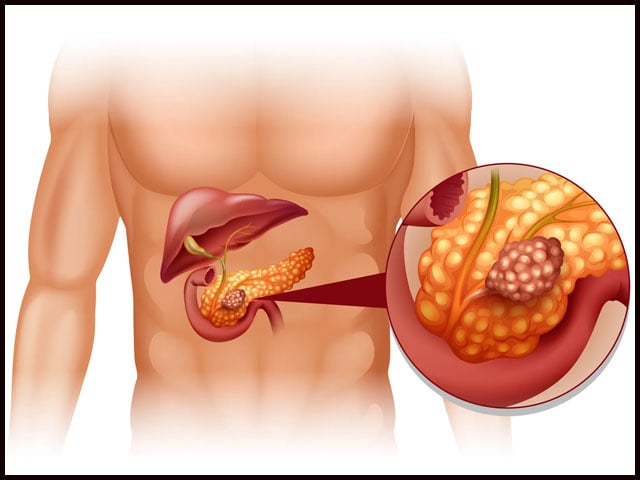Pancreatic cancer is often referred to as the ‘silent killer’ because of its nominal or vague symptoms in its early stages, making it difficult to diagnose.
This is the type of cancer that starts in the pancreas. The pancreas is located at the back of the human stomach and helps digest food and produce hormones.
Pancreatic cancer is very lethal and has a high mortality rate. According to a report, the death rate due to pancreatic cancer in Pakistan is 97.8%.
Doctors say that smoking and unhealthy lifestyle increases the risk of pancreatic cancer.
Why is pancreatic cancer a ‘silent killer’?
Location: The pancreas is located deep in the abdomen, which makes it difficult for doctors to diagnose it through a physical examination of the patient alone.
Symptoms in the early stages:
Pancreatic cancer does not show any obvious symptoms in the early stages, and if they do appear, they are vague and can be mistaken for symptoms of another less dangerous disease.
Rapid spread:
Pancreatic cancer spreads very quickly, resulting in a shorter interval between the appearance of symptoms and the progression of the cancer to the next stage, making it less likely to be diagnosed and treated at an earlier stage.
Common symptoms of pancreatic cancer:
Stomach pain: Abdominal pain or discomfort that radiates to the back is a common symptom of pancreatic cancer.
Jaundice: In the case of pancreatic cancer, the eyes and skin start to turn yellow because the cancer cells block the bile duct (bile duct), which causes a substance called bilirubin to build up in the blood.
Weight loss: Persistent weight loss for no apparent reason can be a symptom of many types of cancer, including pancreatic cancer.
Lack of appetite: In case of cancer, the affected person loses his appetite, so his weight also starts to fall rapidly.
Digestive problems: When cancer affects the digestive system, the color and texture of the stool changes.
Diabetes: In some cases, pancreatic cancer can also lead to diabetes, especially when the cancer cells affect the insulin-producing cells in the pancreas.
(function(d, s, id){
var js, fjs = d.getElementsByTagName(s)[0];
if (d.getElementById(id)) {return;}
js = d.createElement(s); js.id = id;
js.src = “//connect.facebook.net/en_US/sdk.js#xfbml=1&version=v2.3&appId=770767426360150”;
fjs.parentNode.insertBefore(js, fjs);
}(document, ‘script’, ‘facebook-jssdk’));
(function(d, s, id) {
var js, fjs = d.getElementsByTagName(s)[0];
if (d.getElementById(id)) return;
js = d.createElement(s); js.id = id;
js.src = “//connect.facebook.net/en_GB/sdk.js#xfbml=1&version=v2.7”;
fjs.parentNode.insertBefore(js, fjs);
}(document, ‘script’, ‘facebook-jssdk’));


